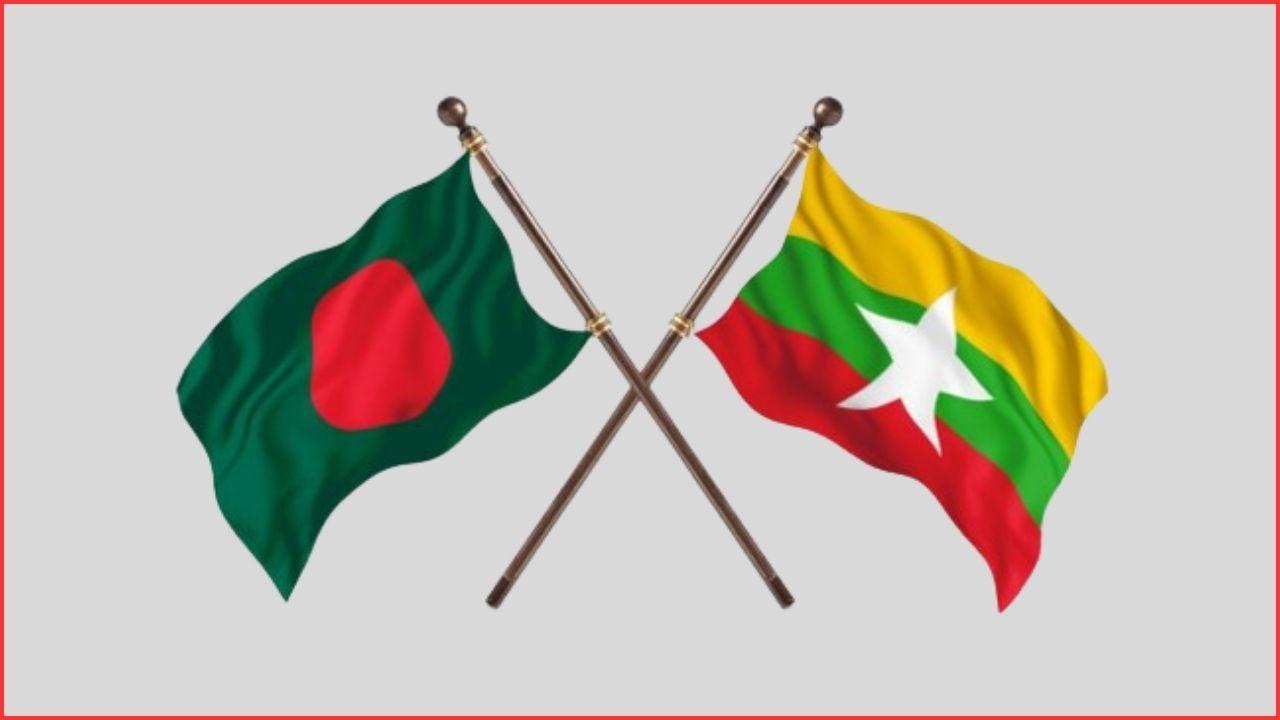Will Bangladesh be able to deal with geopolitical challenges by overcoming Myanmar border concerns?

As the tempo of conflicts within Myanmar remains fickle after months of dramatic insurgent advances since October 2023, the civil conflict (read war here) and its main focus has shifted to the state of Rakhine. The current situation in the region can well be termed as an escalation of decisive proportions as conflict with mainly the Arakan Army (AA) has spiked sharply. The stakes are very high not only for the Myanmar junta but also for the region. If the AA succeeds in building decisive control over the Rakhine state located between the Bay of Bengal and the Myanmar heartland, it will effectively present the military’s State Administration Council (SAC) regime with a defeat. This would not only thwart the Myanmar junta’s perceived strength, control, and cohesion over Rakhine, but also weaken the junta’s monopoly of power in the whole of Myanmar on a scale that would mean a strategic and political defeat.
AA is a member of the tripartite Brotherhood Alliance that overran wide swathes of Shan state in November and December. In the last decade, the Arakan Army has become one of the most powerful ethnic armed groups in Myanmar and has expanded its administrative control in Rakhine State. On February 1, 2023, the brutal military in Myanmar marked two years since its seizure of power from the civilian government in 2021. Since then, the country has been plagued by escalated civil war and political and economic turmoil. It is critical to end the military regime in Myanmar for all ethnic groups, especially the ethnic armed revolutionary groups taking the significant role of supporting and fighting alongside the resistance groups across the country. According to the Stimson Center’s analysis, the AA’s approaches can be summarized by four actions: power competition with the junta in Rakhine, cooperation with other ethnic allied forces in the fight against the junta, assistance to resistance forces after the coup, and establishment of relations with the National Unity Government (NUG). Thus, AA seemingly is willing to allow political space to other groups as long as it can ensure the fall of the Myanmar junta and/or the significant autonomy of governance and power structure of the Rakhine state as devised by the AA.
The conflict in Rakhine has become severe concern for the transregional stability now. Interestingly, India and China seemingly are on the same page on Rakhine issue. Both India and China have strategic interests in the region, and the region’s stability (albeit controlled by how and whom may be a point of contention) are among the key priorities of the two regional giants. For India, Paletwa – a strategically key township in its Chin state – is key strategic significance among others. positioned about 20 kms from the Bangladesh border, is a vital cog in India’s Look/Act East Policy, more specifically to the India-funded multi-crore infrastructure venture – the Kaladan Road Project, or the Kaladan Multi-Model Transit Transport Project, started by the United Progressive Alliance (UPA) government in 2008. A part of the ambitious bilateral project, estimated to be about billions of USD, is to connect the Kolkata port at Hoogly to Myanmar’s Sittwe port. Further expansion of the infrastructure project into Myanmar’s Chin State would go on to benefit India even more significantly. The Kaladan project will also generate an alternate route to the region aside from the strategically vulnerable Siliguri Corridor, or what is commonly called the Chicken’s Neck, reducing the distance for Indian access to its northeast, and provide needed strategic access. The Indian government’s railway project with Bangladesh to join South Tripura with Chittagong’s Cox’s Bazar where a deep seaport is under construction will help the northeastern states with access to the sea. As part of the Brotherhood Alliance, stitched between NUG’s armed wing, AA has been able to wrest control of several strategic townships close to Myanmar’s borders with India, China, Bangladesh and Thailand. It took over Paletwa’s on January 15 it is for India to closely monitor the Arakan Army, importantly, its approach towards China and India. AA has earlier attacked the India-backed Kaladan project but has never touched any Chinese big-ticket infrastructure projects in the region is also oft-cited as proof of AA’s proximity to China and its geopolitical interests.
China is funding Myanmar’s Kyaukphyu Special Economic Zone (SEZ) in that state. The SEZ will be linked to the Shwe Gas Field through the Bay of Bengal to Yunnan. China is also linking that part of its country with Myanmar through a railway line. China is reportedly backing the ethnic groups to take control of the border areas, while some analysts say China is helping both sides to maintain influence and control irrespective of who turns the victor. Irrespective, stability with a modicum of influence or control over the governing force of Rakhine is strategic priority for India and China.
Bangladesh is now become a gawper without benefits in the polyamory of Myanmar junta, India, China, and the Brotherhood Alliance and/or AA, while nurturing the unfortunate unwanted children borne from Myanmar’s illicit affairs. Bangladesh is yet to make any headway on Rohingya repatriation efforts with the junta, who is an unreliable negotiator at best, has not received any concrete support or commitment on the issue from China, who is seemingly the stalling game, and has not received any support on the issue from India, who remains aloof of the issue at best.
The territorial gains are ensuring the AA’s long-term objective of controlling Rakhine. But they may also prove pivotal in strengthening the group’s relationships with its neighbours – India and Bangladesh – which have long kept the AA at an arm’s length, but a close eye on its movements. A report in the Frontier says that there has already been low-level, informal engagement between Bangladesh and the AA for years. However, most of the communication has taken place between “field level security forces” along the Bangladesh-Myanmar border, and the Bangladesh foreign ministry has “very little idea about it”. The report further says that a senior member of the AA confirmed the dialogue, noting that the “Bangladesh authorities are more concerned than in previous years” as fighting “continues near the border areas”.
Notwithstanding the authenticity and veracity of the informal engagement, Bangladesh is and rightly so concerned with the fighting across its border. The fighting has caused some infliction of displaced population, stray (or provoking?) mortar, shell, and other attacks on Bangladesh side of the border, and now Myanmar border officers entering Bangladesh for shelter from the conflict – all of these are issues that Bangladesh is forced to handle also in a area where it has its own set of internal separatist, militant, and internal conflict issues, both historic and new ones. In this situation, stakes and risks are getting higher and higher for Bangladesh’s internal, regional, and security stability.
Reportedly, Bangladesh has so far refused to engage formally with a non-state actor while prioritising its relationship with the Myanmar junta, which seized power in a 2021 coup. The junta’s unwillingness or inability to secure repatriation creates an opening for the AA, which has sought to portray itself as more inclusive towards the Rohingya than the central authorities or previous Rakhine nationalist movements. If situation and governance structure of Rakhine State changes in any decisive shape or form, Bangladesh’s foreign policy practices inform that Dhaka will engage with any formally recognized entity for both bilateral, regional, and other issues of importance, and repatriation will always remain at the top of the list. While that decisive change is evolving, Bangladesh needs to ensure its own internal security. At the same time, it should also be a priority for Bangladesh to poise itself as more effective and dependable actor in the constituency of the Bay of Bengal trade routes. Given the only sea trade route in the world that is undisputed by littoral parties, having a significant amount of annual global trade going through it, and Bangladesh being a strategic and central littoral state in the area having four of the 13 sea ports including a deep seaport, Bangladesh should focus on converting this ostensible crisis into an opportunity.
Author: Political and International Affairs Analyst


Leave A Comment
You need login first to leave a comment